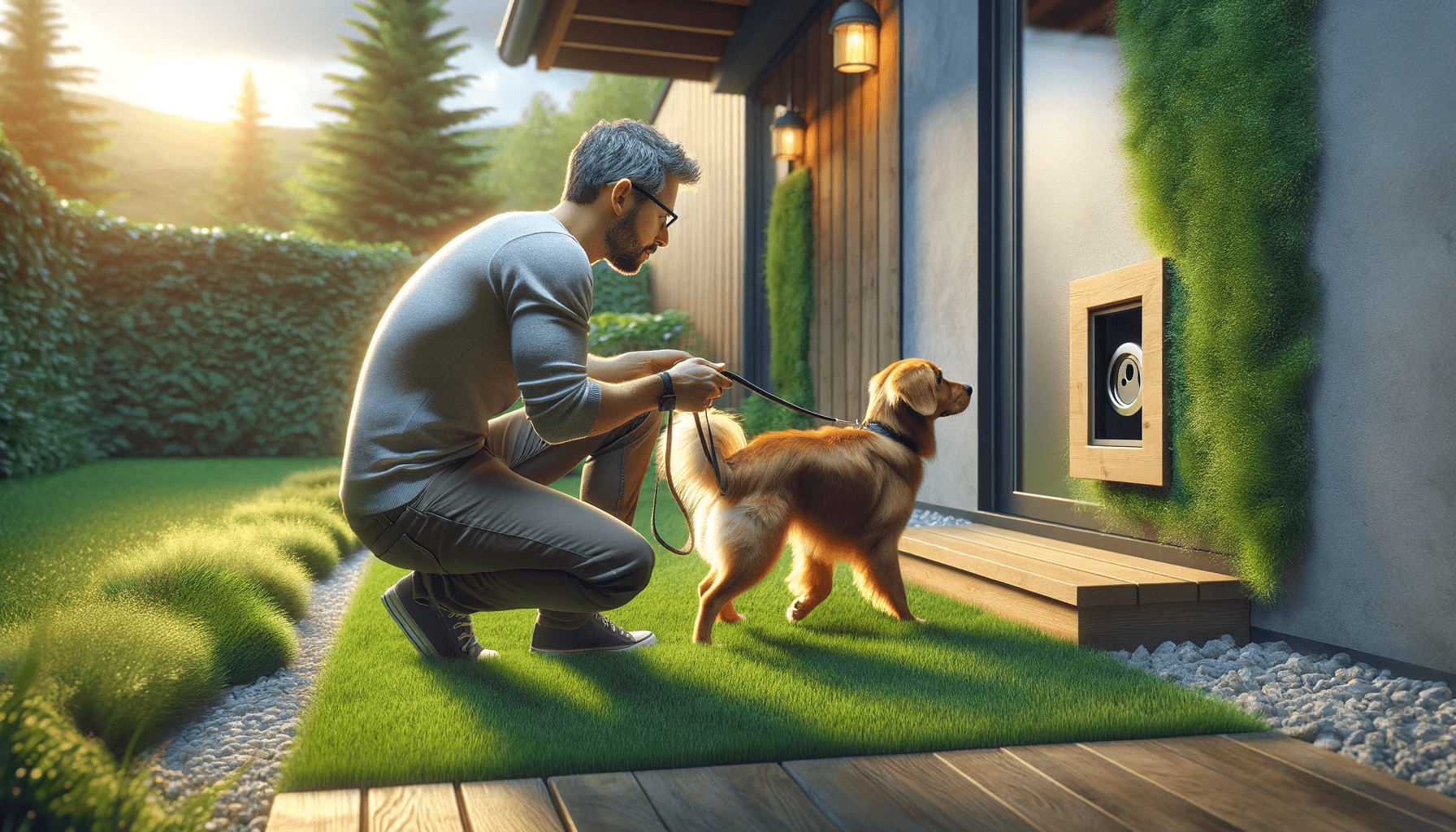Are you struggling to get your furry friend to listen? Look no further!
In this article, we'll guide you through the essential steps for dog obedience training. We'll show you how to set a solid foundation, teach basic commands, reinforce positive behavior, and address common issues.
Plus, we'll share tips for advanced training. Get ready to transform your pup into a well-behaved companion in no time!
Key Takeaways
- Establish clear rules and boundaries
- Start with basic commands and gradually increase difficulty
- Reinforce positive behavior with rewards and praise
- Address common behavior issues with understanding and professional guidance
Setting the Foundation
To set the foundation for dog obedience training, you need to establish clear rules and boundaries. Building trust and establishing boundaries are crucial in creating a well-behaved and obedient dog.
Trust is the cornerstone of any successful training relationship. It's important to establish trust with your dog by being consistent, patient, and fair in your interactions. Dogs thrive on routine and structure, so setting clear rules and boundaries is essential. This means clearly communicating what behaviors are acceptable and what're not.
Consistency is key in enforcing these rules and boundaries. Dogs are intelligent animals and will quickly learn what's expected of them if you're consistent in your training methods.
By setting clear rules and boundaries, you're providing your dog with a sense of structure and security. This will ultimately lead to a happier and more well-behaved dog.
Teaching Basic Commands
Start by teaching your dog basic commands. This is an essential part of dog obedience training and will help establish a strong communication between you and your furry friend.
One important command to teach is 'stay'. To train your dog to stay, start by putting them on a leash. Hold the leash firmly but not too tight, and give the command 'stay' while making a stopping motion with your hand. Take a step back, and if your dog stays in place, reward them with praise and a treat. Repeat this exercise, gradually increasing the distance and duration of the stay.
Another basic command to teach is 'come'. This command is important for your dog's safety and allows you to call them back to you in any situation. Practice the 'come' command in a safe and controlled environment. Use a leash and call your dog's name followed by the command 'come'. When they come to you, reward them with praise and a treat.
Remember to be patient and consistent with your training. With practice and positive reinforcement, your dog will quickly learn these basic commands.
Reinforcing Positive Behavior
As you continue teaching your dog basic commands, it's important to reinforce positive behavior to further strengthen the bond between you and your furry companion. Reward-based training is an effective method that uses positive reinforcement to encourage desired behavior. When your dog follows a command correctly, reward them immediately with treats, praise, or affection. This positive reinforcement helps them associate the behavior with a positive outcome, making it more likely that they'll repeat it in the future.
Clicker training is another popular technique that can be used to reinforce positive behavior. A clicker is a small handheld device that makes a distinct clicking sound when pressed. The clicker acts as a signal to your dog that they've done something right, and a reward will follow. By pairing the click with a treat or praise, you can quickly and effectively communicate to your dog which behaviors are desired.
Consistency is key when reinforcing positive behavior. Make sure to reward your dog every time they exhibit the desired behavior, at least in the initial stages of training. As they become more proficient, you can gradually reduce the frequency of rewards, but it's important to continue reinforcing positive behavior regularly.
Addressing Common Behavior Issues
When addressing common behavior issues in dog obedience training, you should focus on identifying the root cause of the problem. This will help you develop a targeted approach to address the issue effectively. Two common behavior issues that require special attention are separation anxiety management and aggression/leash reactivity.
Here's what you need to know about these issues:
- Separation anxiety management:
- Understand the signs: Excessive barking, destructive behavior, and accidents indoors are signs of separation anxiety.
- Gradual desensitization: Teach your dog to feel comfortable being alone by gradually increasing the time spent apart.
- Provide mental stimulation: Engage your dog with interactive toys or puzzles to keep them occupied when alone.
- Aggression and leash reactivity:
- Professional guidance: Seek help from a professional dog trainer to address aggression and leash reactivity.
- Positive reinforcement: Use positive reinforcement techniques to reward good behavior and redirect aggressive tendencies.
- Controlled exposure: Gradually expose your dog to triggers and teach them alternative behaviors to reduce reactivity.
Continuing Education and Advanced Training
Keep progressing your dog's obedience skills by pursuing continuing education and advanced training. Once your dog has mastered the basic commands, it's important to challenge them with more advanced tricks and behaviors. This not only keeps their mind sharp, but also strengthens the bond between you and your furry companion.
Advanced tricks are a great way to showcase your dog's intelligence and abilities. Teach them tricks like playing dead, rolling over, or even fetching specific items by name. These tricks not only impress your friends and family, but also provide mental stimulation for your dog. Remember to break down the trick into smaller steps and use positive reinforcement to reward your dog for each successful attempt.
Off leash training is another essential skill that should be part of your dog's advanced training. It gives them the freedom to roam and explore while still remaining under your control. Start in a secure, enclosed area and gradually increase the level of distractions. Use a long leash as a safety precaution and reward your dog for staying close to you. With consistent practice and positive reinforcement, your dog will soon be able to enjoy off leash adventures.
Continuing education and advanced training are crucial for taking your dog's obedience skills to the next level. By teaching them advanced tricks and mastering off leash training, you can ensure that your dog remains well-behaved and obedient in any situation.
Frequently Asked Questions
Can Obedience Training Be Effective for Older Dogs?
Obedience training can be effective for older dogs, providing numerous benefits. To adapt techniques for seniors, focus on their individual needs and physical limitations. Remember, it's never too late to teach an old dog new tricks!
How Long Does It Usually Take for a Dog to Learn Basic Commands?
To accelerate your dog's learning process in basic command training, consistency is key. By using positive reinforcement and breaking down commands into smaller steps, you can overcome common challenges and see progress in no time.
Is It Necessary to Use Treats as Rewards During Obedience Training?
Using alternative rewards in dog obedience training is a valid approach. While positive reinforcement is necessary for successful obedience training, treats are not the only option. Praise, play, and toys can also be effective rewards.
Can Obedience Training Help With Aggression Issues in Dogs?
Obedience training alone may not solve aggression issues in dogs. Other methods may be necessary. However, obedience training can be effective for dogs with severe aggression issues when used alongside appropriate behavior modification techniques.
Are There Any Specific Breeds That Are More Difficult to Train Than Others?
Some breeds can be more challenging to train than others. However, with the right training methods and patience, even stubborn breeds can learn obedience. It's important to find what motivates your dog and use positive reinforcement techniques.
Conclusion
In conclusion, dog obedience training is a vital process that requires setting a strong foundation, teaching basic commands, reinforcing positive behavior, addressing common issues, and continuing education for advanced training.
By following these essential steps, you can establish a well-behaved and obedient dog that will bring joy and harmony to your life.
Remember to be patient, consistent, and use positive reinforcement techniques to shape your dog's behavior effectively.
With dedication and commitment, you can achieve great results in your dog's obedience training journey.






